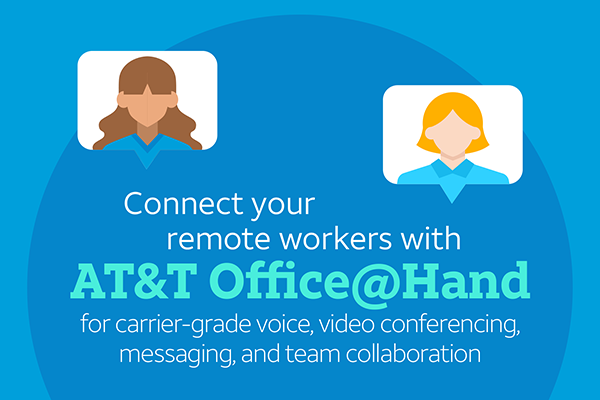Don’t let legacy technology hold you back
If you’re not aggressively evolving beyond the legacy technology of your growing business, you’re stunting your organization’s growth. We’ll explore why—and the business “musts” driving the push to evolve fast—in this article. And we’ll wrap up with recommendations to help you start or advance your tech transformation beyond the legacy tech you may be relying on.
Business “must” 1: Customers demand it
Dion Hinchcliffe, the Vice President and Principal Analyst of Constellation Research, described a seamless customer experience as “the most important discriminating factor for how a business will perform.1
It’s hard—if not impossible—to build a seamless, digital-first experience on legacy technology, whether you have some or many archaic components stitched into your infrastructure.
CEO Rakesh Soni said, “Customers today demand meaningful content, which is based on their preferences and behaviors. Companies have to accept these digital transformations to offer this connected customer experience. Mobile devices, apps, machine learning, automation, and more allow customers to get what they want, when they want it.2
Data backs him up: 66% of customers expect organizations to understand their wants and needs. 52% expect personalization of products and services. 70% percent value convenience more than branding.3
And most telling of all, according to PricewaterhouseCoopers, 33% of customers will abandon a brand after a single bad experience—even if they already loved the brand.4
Business “must” 2: Employees demand it
Employees, like consumers, have gotten used to seamless, empowering user experiences on the technology they use. If you can’t give your employees this type of experience, you’re hurting your business on two fronts.
First, awkward user experiences drag efficiency. Daily, routine, repetitive tasks performed by employees can be time-consuming and tedious. Legacy technology may be holding you and your teams back from streamlining and even automating processes. What more could you accomplish by cutting up to 70% of the costs associated with some of these processes?5
The Harvard Business Review published research showing businesses of all sizes that were early adopters of automating processes via machine learning “saw gains in bottom-line performance using machine-reengineering to slash 15% - 70% of costs from certain processes. At the same time, some saw a tenfold improvement in workforce effectiveness or value creation.5
Several CIOs are “working more closely with their company’s human resources department to identify work that is repetitive, dangerous, or otherwise stressful and that might be done by technology rather than human workers.6
On another front, the issues caused by your legacy technology may harm your ability to recruit and keep great employees. The CIO of a healthcare-sector company noted that his company is focused on automation to not only boost efficiency, but to enhance the employee experience. “It’s the difference between a customer care rep having to get into 6 or 10 different systems to get information a customer needs, versus creating a simple portal to query,” he said.7
Digital transformation that creates more seamless employee experiences can also help alleviate attrition by burnout. For those who work remotely, their work and personal lives tend to fuse.
With no separation, they work longer hours. That can be great for productivity, but rough on job longevity. With much of the workforce now remote, they have little-to-no separation between work life and home life. One survey by Indeed showed that 52% of workers felt burned out.8
Business “must” 3: Staying competitive demands it
During the pandemic, businesses accelerated their investments into digital transformation initiatives. Most thought the pace of spending would settle back to normal levels as we came out of the pandemic.9 However, that hasn’t been the case.
“Organizations now see digital acceleration as a more permanent fixture in the business landscape,10 notes a white paper by the Harvard Business Review. In fact, 255 of 280 (91%) of business executives who had accelerated their digital transformation during the pandemic said they “plan to maintain the faster speed—or possibly increase it—even after the pandemic ends.11
You need to keep pace so competitors don’t pull so far ahead of you that you can’t close the gap.
Meet the demands. Enjoy the benefits.
Your efforts to digitally transform beyond legacy tech can unlock many benefits for you.
Agility and opportunity
You need a digitally transformed foundation of connectivity that will support technologies you may want to adopt. But if you’ve been less than diligent in digital transformation, it may bind your agility and close the door on opportunities as you grow.
Suppose you want to adopt augmented or virtual reality tools because it will improve and accelerate training. Or you want to connect buildings and systems to create a more responsive, satisfying customer experience. You may not be able to do that if you remain locked in legacy chains.
Reduced budget consumption
The older your tech gets, the more money it takes to keep it up and running. The U.S. federal government is a prime example of this truth. In 2019, the U.S. federal government spent 80% of its “IT budget on Operations and Maintenance (aging legacy systems).12 That left only 20% of the budget for development, modernization, and enhancement.
Greater strategic diligence
Legacy equipment is like a black hole that sucks time from your day. A lot of time. Time that might be spent planning for future initiatives and growth. In a recent survey of CIOs, more than half declared that they must dedicate from 40% - 60% of their time to managing legacy IT instead of shifting towards strategic activities.13
Stronger support for compliance
Depending on what industry you’re in, you’re likely governed by federal, state, and industry-specific regulations. Failure to update legacy tech can cause a range of blind spots and compliance difficulties for you—and even lead to millions of dollars in fines.
Stronger cybersecurity defenses
Legacy tech can weaken your cybersecurity defenses. Suffering a breach through weak-link-legacy tech in the network can take a big bite out of your cash reserves. The average cost of a data breach leapt from $3.86M (USD) in 2020 to $4.24M in 2021.14
Don’t hold back
One of the reasons growing businesses put off transformation is that it can feel complicated and overwhelming. You’re not just swapping out A technology for B technology. You should make every digital transformation move according to a blueprint that reshapes the entire experience for customers and internal teams. Using experts and professional services can definitely help.
Here are some ways other growing businesses approach their growth-promoting transition beyond legacy technology.
Invest in the right network to support the data you want to travel on it
One key criterion is the type of connectivity you build upon. Connectivity quality can go a long way toward making other parts of your digital transformation smoother. For example, when you team with a provider whose future-ready connectivity flows across fiber and 5G, the network rewards you with fluidity, agility, and capacity.
Think of the network as an interstate. The quality of the interstate is crucial to supporting the number and types of vehicles—the solutions and apps you use—that drive across it. Your core apps and services function better on a provider’s digitally transformed core network.
Build your team and break down silos with inside and outside partners
Put together a long-term team, populated with leaders from every department, to drive your digital transformation. Reach out to key outside partners whose technology intersects with yours. Their point of view can inform your strategy and decisions.
Build the strategy
As we pointed out in a previous article, middle-market companies with “a digital vision that is clear, comprehensive, and guides strategic decisions grow 75% faster on average than less digitally sophisticated peers.” However, only 46% of midmarket organizations have a digital transformation roadmap, according to the Harvard Business Review.
Establish the key performance indicators (KPIs)
Use KPIs to measure success. Quickly identify initiatives that aren’t performing well, so you can reallocate budget to other solutions that can help boost performance.
Prioritize key areas that need attention
You’ll want to triage areas to target and address. Collaboration, cybersecurity, secure access service edge (SASE), cloud, artificial intelligence—wherever you spot legacy-laden systems—zero in on those areas and plan transformation. Remember, your network determines how well you can connect to apps and services that will drive your growth.
Don’t let your legacy technology hold you back. Remember, “an organization’s ability to adapt quickly to supply chain disruptions, time to market pressures, and rapidly changing customer expectations has become critical.1 It’s not too late for you to digitally transform the fortunes of your business. Explore how you can build a digitally nimble network architecture with AT&T Business.
1 BTOES Insights. “What is Digital Transformation Workplace?”
2 Soni, Rakesh. “Customer Experience is Driving Digital Transformation.” LoginRadius blog.
3 Afshar, Vala. “What Is Customer Engagement? Key Findings from Global Research To Help Your Business Grow.” Salesforce.com.
4 PwC. “Experience is everything: Here’s how to get it right.”
5 Ibid.
6, 7, 9 Harvard Business Review: Analytic Services. “Maintaining Momentum on Digital Transformation: CIOs Share Strategies to Sustain Speed.” 2022.
8 Threlkeld, Kristy. “Employee Burnout Report: COVID-19’s Impact and 3 Strategies to Curb It.” Indeed.com. 11 MAR 2021.
10 Ibid.
11 Harvard Business Review Analytic Services, “Digital Acceleration Redefines the Future of Work.” September 2021.
12 U.S. Government Accountability Office. “Information Technology: Agencies Need to Develop and Implement Modernization Plans for Critical Legacy Systems.” 27 APR 2021.
13 Metzger, Marlin and Thorsten Bernecker. “Legacy modernization: A digital transformation. How to modernize your IT infrastructure.” Deloitte: 2022.
14 Cost of a Data Breach Report 2021. Ponemon Institute: July 2021.





Share
Share this with others